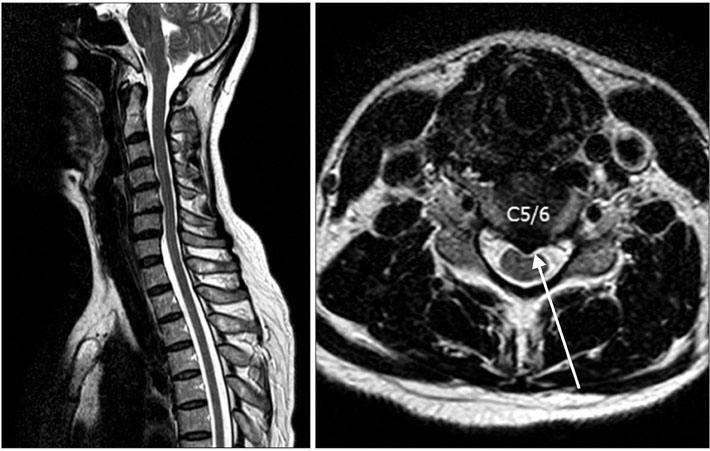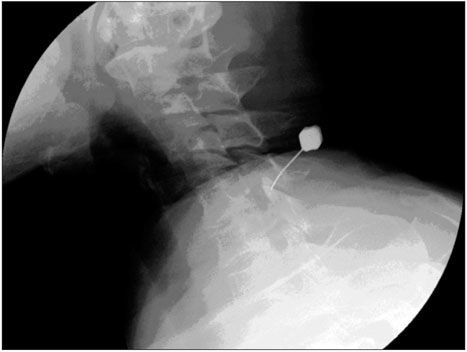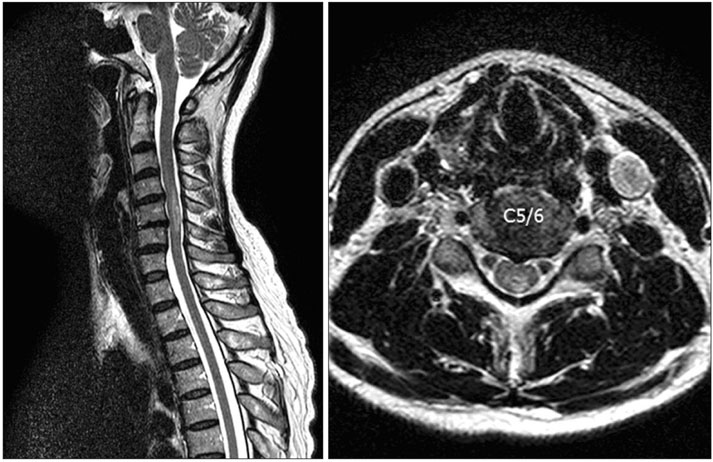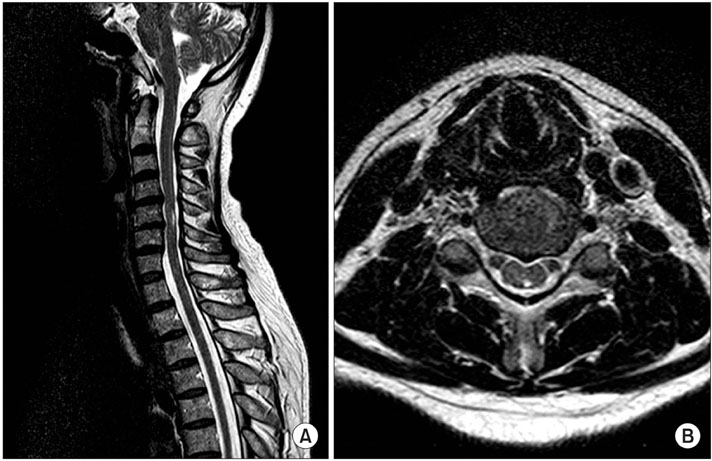J Korean Orthop Assoc.
2010 Oct;45(5):408-412.
Acute Spinal Cord Injury after Cervical Nerve Root Block
- Affiliations
-
- 1Department of Orthopedic Surgery, School of Medicine, Wonkwang University, Iksan, Korea. osktg@wonkwang.ac.kr
Abstract
- Selective cervical nerve root block is a widely utilized nonsurgical strategy for the management of cervical radicular and axial pain. The technique has been shown to be efficacious in relieving the patient's symptoms. Although effective, there are a range of possible complications associated with this procedure. In particular, acute spinal cord injury after cervical nerve root block is very rare, but it lead to serious functional impairment. The literature on acute spinal cord injury is very small and there have been no reports from Korea. We experienced a case of a patient with an acute injury of the cervical spinal cord after cervical nerve root block who was followed 28 months.
Figure
Reference
-
1. Oeppen RS. Discovery of the first local anaesthetic--Carl Koller (1857-1944). Br J Oral Maxillofac Surg. 2003. 41:243.2. Brouwers PJ, Kottink EJ, Simon MA, Prevo RL. A cervical anterior spinal artery syndrome after diagnostic blockade of the right C6-nerve root. Pain. 2001. 91:397–399.
Article3. Karasek M, Bogduk N. Temporary neurologic deficit after cervical transforaminal injection of local anesthetic. Pain Med. 2004. 5:202–205.
Article4. Tiso RL, Cutler T, Catania JA, Whalen K. Adverse central nervous system sequelae after selective transforaminal block: the role of corticosteroids. Spine J. 2004. 4:468–474.5. Radhakrishnan K, Litchy WJ, O'Fallon WM, Kurland LT. Epidemiology of cervical radiculopathy. A population-based study from Rochester, Minnesota, 1976 through 1990. Brain. 1994. 117:325–335.6. Renfrew DL, Moore TE, Kathol MH, el-Khoury GY, Lemke JH, Walker CW. Correct placement of epidural steroid injections: fluoroscopic guidance and contrast administration. AJNR Am J Neuroradiol. 1991. 12:1003–1007.7. Slipman CW, Lipetz JS, Jackson HB, Rogers DP, Vresilovic EJ. Therapeutic selective nerve root block in the nonsurgical treatment of atraumatic cervical spondylotic radicular pain: a retrospective analysis with independent clinical review. Arch Phys Med Rehabil. 2000. 81:741–746.
Article8. Huston CW, Slipman CW, Garvin C. Complications and side effects of cervical and lumbosacral selective nerve root injections. Arch Phys Med Rehabil. 2005. 86:277–283.
Article9. Ma DJ, Gilula LA, Riew KD. Complications of fluoroscopically guided extraforaminal cervical nerve blocks. An analysis of 1036 injections. J Bone Joint Surg Am. 2005. 87:1025–1030.10. Hodges SD, Castleberg RL, Miller T, Ward R, Thornburg C. Cervical epidural steroid injection with intrinsic spinal cord damage. Two case reports. Spine (Phila Pa 1976). 1998. 23:2137–2142.
- Full Text Links
- Actions
-
Cited
- CITED
-
- Close
- Share
- Similar articles
-
- The Significance of Space Available for the Spinal cord at the Injured Level in the Lower Cervical Spine Fractures and Dislocations
- An Anatomical Study on the Variations of the First Cervical Dorsal Root
- The Prognosis of the Acute Cervical Spinal Cord Injury
- Trigeminal Neuralgia Resulting from Delayed Cervical Cord Compression after Acute Traumatic Fracture of Odontoid Process
- Primary Malignant Melanoma of the Cervical Spinal Nerve Root: A Case Report





